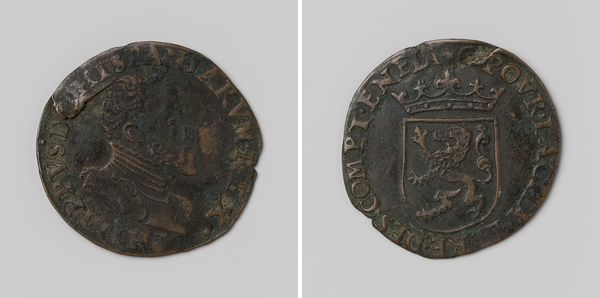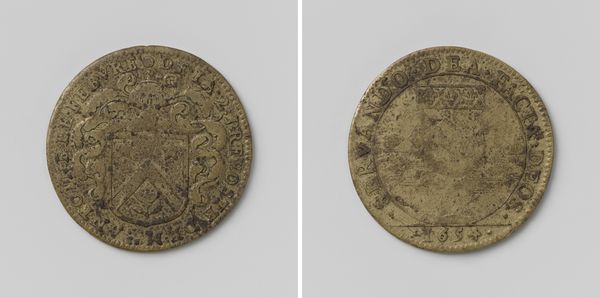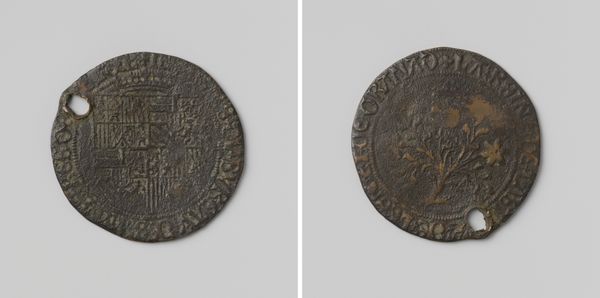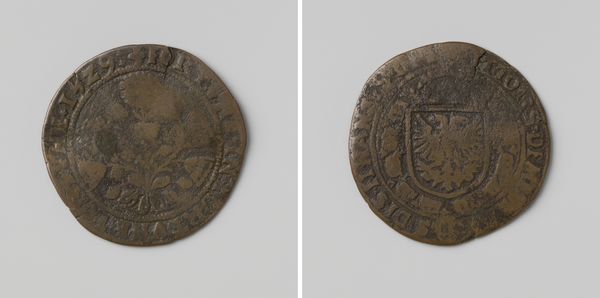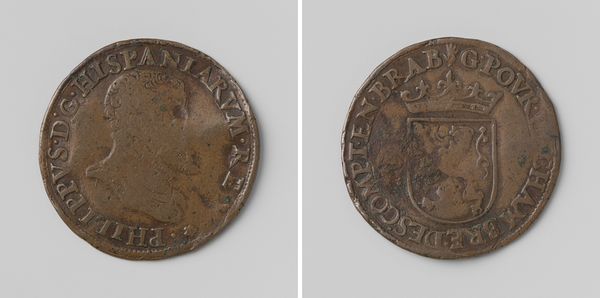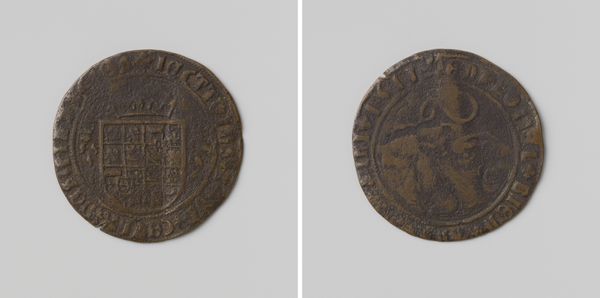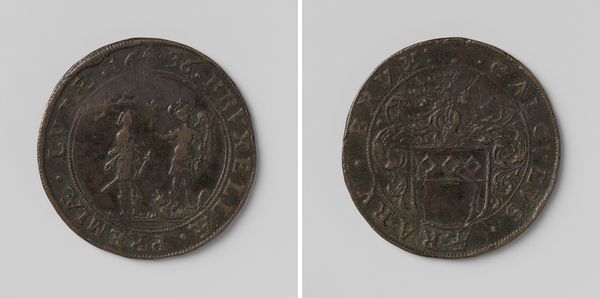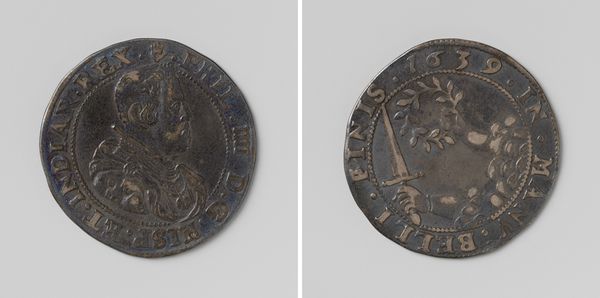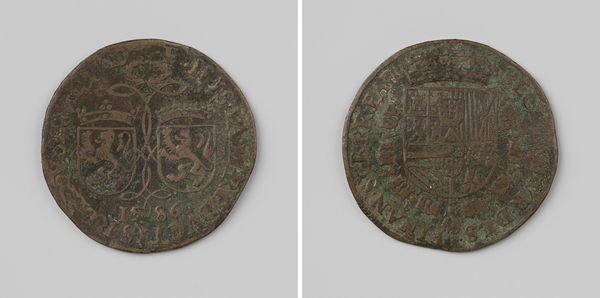
Karel II, koning van Spanje, rekenpenning geslagen op last van de raad van Financiën 1676
0:00
0:00
print, metal, engraving
#
portrait
#
baroque
# print
#
metal
#
round circular shape
#
history-painting
#
engraving
Dimensions: diameter 3 cm, weight 62 gr
Copyright: Rijks Museum: Open Domain
Curator: This is a Dutch “rekenpenning,” or reckoning penny, minted in 1676 by order of the Council of Finance to commemorate King Charles II of Spain. Editor: It’s striking, even though it’s just a small coin. The dark, worn metal and crisp lines of the engraving give it such a solemn, weighty presence. Curator: It certainly tells a story! Reckoning pennies were used as counters for calculations, often on a counting board. Their designs often held political or social significance. In this instance, it’s acting almost as a piece of propaganda or a symbolic gesture. The Dutch Council of Finance created this to represent Charles. Spain was a very important power and these coins could indicate strategic political messaging on the part of the Dutch. Editor: I find the imagery fascinating. The profile portrait on one side obviously represents King Charles. He’s surrounded by text which speaks to his position and titles. And the heraldic imagery of the lion rampant on the other side feels incredibly forceful, especially because of the placement of the crown just above it. The year "1676" flanking either side reinforces a specific point in time and royal authority. Curator: The imagery definitely reflects Charles's power and legitimacy at a time when Spain's influence was being challenged in various parts of Europe. The Dutch Republic, itself a rising power, would have been very aware of these power dynamics and would likely have hoped to show off this awareness through minting coinage such as this. This “rekenpenning” essentially becomes a visual representation of power dynamics. It circulated at a specific moment when these political relationships were tense, making it a historical marker as well as a symbol of royal power. Editor: So the images become not just decorative, but a shorthand for very complicated and contingent relationships. A visual contract, almost. It makes you wonder about the hands it passed through. Curator: Absolutely. I find this "rekenpenning" a testament to how even the smallest objects can encapsulate significant historical and political narratives. It really demonstrates that public image could be very carefully crafted and disseminated. Editor: I agree completely; this single piece really lets us reconsider not only Dutch-Spanish relations, but how power and information are communicated visually. It also emphasizes that something small, functional, and almost mundane can actually wield an outsized influence and importance.
Comments
No comments
Be the first to comment and join the conversation on the ultimate creative platform.
